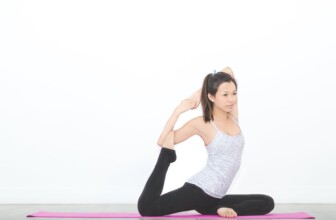Unlocking Wellness: The Transformative Benefits of Massage Therapy
As modern life becomes increasingly fast-paced and stressful, individuals are continuously seeking ways to improve their overall well-being. Among the various wellness techniques available, one method stands out for its myriad of benefits: massage therapy. For centuries, people around the globe have turned to massage as a means to alleviate discomfort, promote healing, and enhance relaxation. In this extensive article, we delve into the transformative benefits of massage therapy, exploring its historical context, psychological and physical effects, and offering real-life case studies that illuminate its impactful nature.
Table of Contents
- 1. The Historical Context of Massage Therapy
- 2. Understanding the Different Types of Massage
- 3. Health Benefits of Massage Therapy
- 4. Psychological Effects of Massage
- 5. Real-Life Case Studies
- 6. Frequently Asked Questions (FAQ)
- 7. Resources
- 8. Conclusion and Future Trends
1. The Historical Context of Massage Therapy
Massage therapy has a rich and fascinating history that dates back thousands of years. Ancient civilizations, including the Chinese, Egyptians, Greeks, and Romans, recognized the importance of touch in enhancing overall health. The earliest recorded use of massage can be traced to China around 2700 B.C., as documented in the Huangdi Neijing (The Yellow Emperor’s Classic of Internal Medicine).
The Greeks and Romans also embraced massage, integrating it into their sporting and medical practices. Renowned physicians such as Hippocrates often used massage as part of their treatment regimens, believing it could aid in the healing process.
Fast forward to the 19th and 20th centuries, innovative figures like Dr. Emile Kinnier Wilson and Dr. John Harvey Kellogg have contributed significantly to the development of modern-day massage therapy techniques, promoting it for both physical and psychological well-being.
2. Understanding the Different Types of Massage
Massage therapy encompasses a wide variety of techniques, each with its unique approach and benefits. Below are some of the most commonly practiced types of massage:
- Swedish Massage: Focuses on relaxation through long strokes and kneading.
- Deep Tissue Massage: Targets deeper layers of muscle and connective tissue, great for chronic pain.
- Sports Massage: Specifically designed for athletes, it aids in preparation for and recovery from sports activities.
- Shiatsu: A Japanese technique that utilizes finger pressure on specific points to balance energy within the body.
- Aromatherapy Massage: Combines essential oils and massage to enhance emotional and physical well-being.
- Hot Stone Massage: Uses heated stones to relieve tension and improve circulation.
- Thai Massage: Involves stretching and acupressure techniques, often performed on a mat without oils.
3. Health Benefits of Massage Therapy
The health benefits of massage therapy extend beyond mere luxury; they encompass essential aspects of physical and mental wellness. Commonly reported benefits include:
- Reduction of Muscle Tension: Massage alleviates tight muscles, enabling better mobility.
- Improvement of Circulation: Enhanced blood flow promotes healing and detoxification.
- Pain Relief: Effective for managing chronic pain conditions, such as arthritis or fibromyalgia.
- Enhanced Flexibility: Regular massage can improve the range of motion in joints and muscles.
- Reduced Stress Levels: Studies show that massage lowers cortisol levels, enhancing relaxation.
- Boosted Immune Function: Regular sessions may aid immune response by decreasing stress hormones.
- Improved Sleep Quality: Massage therapy often contributes to more restful sleep patterns.
4. Psychological Effects of Massage
In addition to the physical benefits, massage therapy has profound psychological effects. Research indicates that regular massage can lead to:
- Reduced Anxiety: Many individuals experience lower levels of anxiety following massage, thanks to its relaxing qualities.
- Improved Mood: The release of endorphins during massage promotes feelings of happiness and well-being.
- Better Cognitive Function: Reduced stress levels result in improved focus and mental clarity.
Moreover, the significance of touch cannot be overstated. Touch has an innate reassuring quality that can help alleviate feelings of loneliness and depression, making massage a powerful therapeutic tool.
5. Real-Life Case Studies
To bring the benefits of massage therapy to life, here are two illustrative case studies:
Case Study 1: Chronic Neck Pain Relief
Client Profile: A 45-year-old office worker with chronic neck pain due to prolonged computer use.
Intervention: After an initial assessment, the therapist employed deep tissue massage techniques focusing on the neck, shoulders, and upper back.
Outcome: Over six weeks, the client reported significant reductions in pain levels and enhanced range of motion, allowing for a better work-life balance.
Case Study 2: Anxiety Management
Client Profile: A 30-year-old female experiencing anxiety and stress from her high-pressure job.
Intervention: The therapist used a combination of Swedish and aromatherapy massage techniques to promote relaxation.
Outcome: The client reported a newfound ability to manage stress effectively and began to seek out massage sessions bi-weekly for ongoing support.
6. Frequently Asked Questions (FAQ)
Q: How often should I get a massage?
A: It varies per individual, but many therapists recommend once every 4-6 weeks for maintenance, while those with chronic issues may benefit from weekly sessions.
Q: Are there any contraindications?
A: Yes, individuals with certain medical conditions, such as severe osteoporosis or recent fractures, should consult a doctor before receiving massage therapy.
Q: Can massage therapy improve athletic performance?
A: Yes, sports massage enhances blood circulation and reduces muscle soreness, which can improve overall athletic performance.
Q: How should I prepare for a massage appointment?
A: Arrive early, hydrate, and communicate any specific issues or preferences to your therapist.
7. Resources
| Source | Description | Link |
|---|---|---|
| American Massage Therapy Association | A professional organization providing resources and information about massage therapy. | Visit AMTA |
| Mayo Clinic | Comprehensive medical information and articles discussing the benefits of massage therapy. | Visit Mayo Clinic |
| Massage Therapy Journal | A peer-reviewed journal featuring research studies on massage therapy practices and benefits. | Read the Journal |
8. Conclusion and Future Trends
In summary, massage therapy offers a plethora of benefits that support both physical and mental well-being. From reducing muscle tension and improving circulation to enhancing psychological health and emotional resilience, massage is an invaluable tool for many.
As we look to the future, trends indicate an increasing willingness to integrate massage therapy into standard healthcare practices. Future studies will likely explore the role of technology in enhancing massage therapy through techniques such as virtual reality and biofeedback.
If you're seeking a holistic approach to wellness, consider incorporating massage therapy into your self-care routine—it’s a commitment that could yield transformative benefits for both body and mind.










